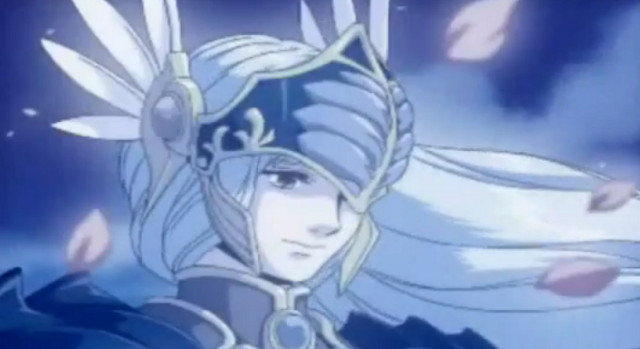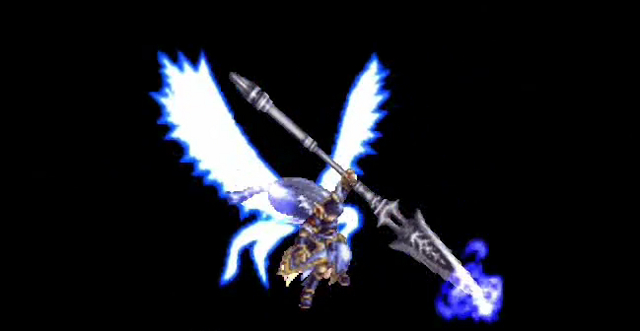Valkyrie Profile: Confusing or Awesome?
Valkyrie Profile is a JRPG created by Enix and Tri-Ace (before the Square/Enix merger), focusing on the Valkyrie Lenneth. As per usual, Japanese game developers play fast and loose with western mythology here.
The plot? Well, it’s complicated.
The basic plot involves the awakening of the Valkyrie Lenneth, who is then tasked by Odin and Freya to retrieve warriors for the upcoming Ragnarok. Even though it’s the end of the world, you’re still expected to train up the warriors you grab. This is the main focus of the game, investing skill points in your warriors to raise up their hero level, thus making them the kind of warrior Valhalla demands of you.
Meeting Valhalla’s requirements, and going above and beyond, nets you better items and more money. Well, not exactly money, per se. There are no shops in this game. Instead, you gain “materialization points” in order to create better armor, weapons, and items. (I can also call a duck a rooster, but it’s still gonna quack.)
The warriors are where this game gets particularly interesting. Since the Valkyrie’s job is to collect the souls of those who died heroically in battle, the game decides to focus on each character’s death as a form of characterization. Indeed, other than the voice acting during combat, each character’s death is the only characterization most of them receive. Still, each death scene is very well done, and the cutscenes give you a real sense of who each character was and what about them was heroic. I’d be lying if I said that some of the stories of love, hope, and sacrifice didn’t make me cry big, manly tears.
Like many games created by Enix, the plot branches in different ways depending on your choices, which mainly involve which dungeon to delve or how quickly to complete a stage. In this, however, the game suffers. The actions needed to engage the B or A ending are not obvious — to the point that even after four playthroughs, the only hint I got that there was more was the fact that there were voice clips for characters I’d not yet gotten. The Internet did come through (the game is over a decade old, after all), and while the necessary actions to unlock the A ending were not difficult, I doubt I’d have stumbled upon them all on my own.
Further complicating matters is the fact that the game gives you pieces of one plot thread or another, but unlocking one part of the A or B thread is no guarantee you’ll unlock all of that thread. Before discovering the full A plot thread, this left me feeling as though the game had a number of loose ends. That said, the full A, B, and C plot branches are interesting and fully developed, and it’s worth the extra playthroughs to see them all.
Valkyrie Profile touches on a few innovative concepts. Instead of a linear map, you use spiritual powers to unlock dungeons, events, and warrior recruitment scenes. Doing so takes away from a limited number of “phases” (which are listed quite prominently, so you know full well what’s going on), and what gets unlocked depends on what chapter of the game you’re in and what dungeons and warriors you’ve unlocked previously.
Dungeon exploration is done via side-scrolling platform activity, whereas combat is done in more traditional turn-based manner — well, that’s not entirely correct, as each party gets a turn, rather than each character. When your party’s turn comes up, you can have each of your characters attack, use an item, or use magic in any order. Warriors are divided up into several different classes, with attack, defense, and magical abilities as appropriate to class and as functional as the skill points you’ve invested. Some weapons even allow a “super attack,” which does massive damage if you can meet certain combat requirements (generally, if you’ve hit the enemy a certain number of times in quick succession).
The entire game feels like an attempt to merge strategy with JRPG, and it does so fairly well. I was acutely aware of the necessity of managing weapons and armor, attack usage and planning during combat, and phases used while unlocking dungeons. The fact that I would have to send at least one warrior to Valhalla every chapter added another level of resource management, since I would have to level up my party with the knowledge that I would have to lose at least one person each chapter.
Is the game worth tracking down? Yes. It’s a good game, and if you can find it cheap, you should get it. But finding it cheap can be a problem. Even though it was listed as a commercial success, it never made the PlayStation’s Greatest Hits listing. Since it was never re-released, PSOne versions of the game often go for over $100 on eBay. Luckily, a revamped version was released for the PSP in 2006, and you can likely find a copy of that version more easily.
Is it art? I’d say yes, though it’s the same kind of weird, complex art you’d find from Salvador Dali. I liked it, but I can see why it’s not for everyone.


